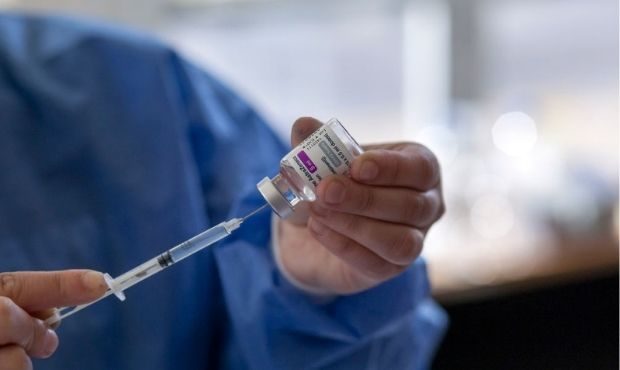CDC: How COVID-19 vaccines work
Aug 19, 2021, 2:55 PM

(Photo by Ricardo Ceppi / Getty Images)
(Photo by Ricardo Ceppi / Getty Images)
The Centers for Disease Control and Prevention explain how the COVID-19 vaccines work in your body:
- mRNA vaccines contain material from the virus that causes COVID-19 that gives our cells instructions for how to make a harmless protein that is unique to the virus. After our cells make copies of the protein, they destroy the genetic material from the vaccine. Our bodies recognize that the protein should not be there and build T-lymphocytes and B-lymphocytes that will remember how to fight the virus that causes COVID-19 if we are infected in the future.
- Protein subunit vaccines include harmless pieces (proteins) of the virus that causes COVID-19 instead of the entire germ. Once vaccinated, our bodies recognize that the protein should not be there and build T-lymphocytes and antibodies that will remember how to fight the virus that causes COVID-19 if we are infected in the future.
- Vector vaccines contain a modified version of a different virus than the one that causes COVID-19. Inside the shell of the modified virus, there is material from the virus that causes COVID-19. This is called a “viral vector.” Once the viral vector is inside our cells, the genetic material gives cells instructions to make a protein that is unique to the virus that causes COVID-19. Using these instructions, our cells make copies of the protein. This prompts our bodies to build T-lymphocytes and B-lymphocytes that will remember how to fight that virus if we are infected in the future.
According to the state Department of Health, the vector vaccine we have available is a one-dose vaccine. Both mRNA vaccines are two-dose vaccines.
UW study finds pregnant individuals ‘do well’ with COVID vaccine
The CDC says it takes a few weeks after vaccination for the body to produce T-lymphocytes and B-lymphocytes. And sometimes, the body’s process of building immunity can cause symptoms, such as fever. Those symptoms are normal and signs that the body is building immunity. Read more about side effects here.
What are T-lymphocytes and B-lymphocytes? According to the CDC:
- B-lymphocytes are defensive white blood cells. They produce antibodies that attack the pieces of the virus left behind by the macrophages.
- T-lymphocytes are another type of defensive white blood cell. They attack cells in the body that have already been infected.
- Macrophages are white blood cells that swallow up and digest germs and dead or dying cells. The macrophages leave behind parts of the invading germs, called “antigens”. The body identifies antigens as dangerous and stimulates antibodies to attack them.
According to the Centers for Disease Control and Prevention, over 357 million doses of COVID-19 vaccine have been distributed across the U.S. as of August 16, 2021.
As of Aug. 17, the Washington State Department of Health reports that 71.5% of the eligible population (ages 12+) in the state had received at least one dose of the COVID-19 vaccine.
Find a location to get vaccinated here.













